Restarting the military draft after more than four decades of an all-volunteer force would be complicated.
But it could be done.
One plan calls for young conscripts to have a choice: two years on active duty or six years in the reserves.
Either way, they’d first have to undergo basic training and job training.
If draftees want to go to college first, they must participate in a Reserve Officer Training Corps program and then serve.
If they fail or quit ROTC, they must then enlist.
Whichever option they choose, their obligation is fulfilled with a single combat deployment.
Those are some of the details proposed by retired Army Maj. Gen. Dennis Laich, one of the nation’s most aggressive advocates of abandoning the all-volunteer force in favor of a return to the draft.
He and others believe that current wars have stretched the military to its breaking point. More than a decade’s worth of bonuses and expanding benefits has brought personnel funding to its limits. Civilians are more disconnected from the military than at any time in history.
The retired two-star and his group, the All Volunteer Force Forum is asking: Is it time to end the more than four-decade experiment of the all-volunteer armed forces and reinstate conscription?
But key critics in military ranks and academia say today’s volunteer force is better educated, more diverse, more professional and capable than the military has ever been.
They counter that conscription would sacrifice readiness in the name of vague notions of shared sacrifice and is a backdoor attempt to restructure how America fights its wars.
Laich said he took a deeper look at where the volunteer force was headed less than a decade ago, amid two ongoing wars and unsustainable pay, benefits, bonuses and recruiting practices.
Laich saw a disconnected American public ignoring volunteers, while military families carry the burden of multiple combat tours and suffer the consequences, including post-traumatic stress, divorce, addiction, injury and suicide.
For example, Alabama, a state with a population of 5 million, sends more military recruits than Los Angeles, Chicago and New York combined, despite a surrounding population total of nearly 40 million people, according to one Army colonel and former recruiter who spoke on a panel on this topic in April.
In 2013, Laich published “Skin in the Game: Poor Kids and Patriots,” and co-founded the AVF Forum.
Since then, he’s written pieces for newspapers and websites and spoken at panels at the University of Kansas and the College of William and Mary, with another scheduled at Ohio State University next year and plans for a 2019 event.
His group is not alone with their concerns. But they are far from the majority.
Laich has few illusions.
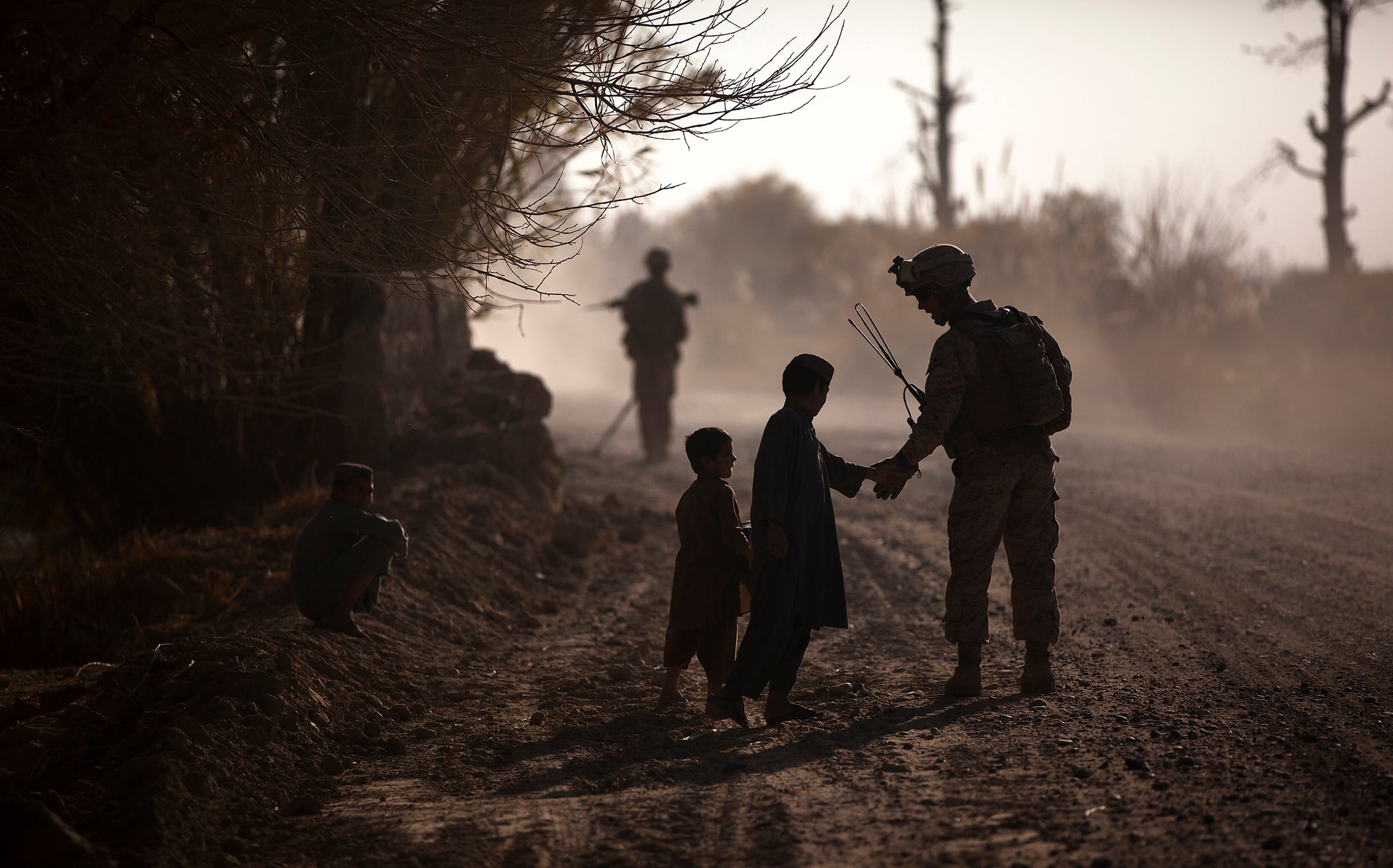
He and others interviewed for this story admit there is zero political will to even discuss mandatory service barring an existential national crisis.
Nevertheless, he hopes with each lecture and each article published that he and his colleagues can lay a foundation that might open a conversation about conscription.
“Most Americans look at the issue of manning our military through the lens of fear, apathy, ignorance and guilt — a lens often polished by self-interest and immediate gratification,” Laich wrote.
HOW WE GOT HERE
The nation moved from a lottery-based draft system during the Vietnam War to a full volunteer service in 1973.
Laich argues that much of that was driven by President Richard Nixon’s campaign promise to end the draft, which was a highly unpopular practice, in part due to a controversial war.
Nearly 2.2 million men were drafted during the Vietnam War-era period of 1961 to 1973.
More than 9 million served during the period. But the majority of draftees served in Vietnam.
Among some draft boards, those with wealth or connections could find ways to avoid military service while those without those advantages could not.
Many argue this contributed to a larger distrust of the system that was sending men to war.
Multiple commissions and studies throughout the 1960s evaluated what a move to a volunteer force would mean.
Some cautioned that it would be too expensive and would divorce the citizenry from its armed forces, thereby increasing militarism.
Those are three of the many arguments that Laich and AVF Forum members make in support of reinstating conscription.
THE HIGH COST OF VOLUNTEERS
Military personnel costs have soared in recent years. A combination of pay, benefits and other bonuses has contributed to at least a 41 percent increase in personnel costs in the decade following 9/11, according to the Congressional Budget Office.
Now, recent plans to increase the size of the military call for re-enlistment bonuses across the force. The Air Force is offering up to $35,000 a year to keep pilots and up to $90,000 for enlisted airman in key career fields.
The Army is offering up to $72,000 to non-commissioned officers from the special operations community.
All of the services are offering bonuses based on specific jobs and ranks.
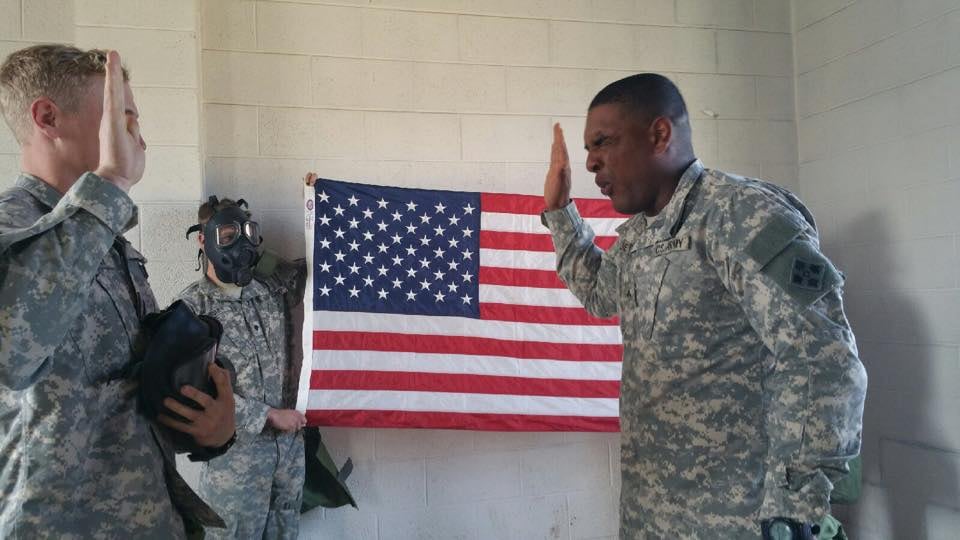
Laich argues that eliminating enlistment bonuses and reducing recruiting budgets would cut much of these costs.
Yet beyond cost lies a more fundamental concern — the perception of an isolated military that is less and less understood or considered by a seemingly apathetic public.
CIVILIAN-MILITARY GAP
A cultural gap between American civilians and their military is a topic of concern for Defense Secretary Jim Mattis, who, before taking over the Pentagon’s top job last year, co-authored the 2016 book “Warriors and Citizens: American Views of Our Military,” with Kori Schake through the Hoover Institution.
The book states that the American people will be more “removed from their defenders” because fewer people are going to war and the nation is generally successful in its military operations. The distance is due, in part, to automation and technological advances that distance most warfighters from the battlefield.
But Army Col. Brian Formy-Duval said in his talk at the College of William and Mary in April that military members bear some of the blame for the gap as well.
From shopping to recreation to haircuts, Formy-Duval said he and other soldiers have few reasons to leave their posts and interact with the public. If they live out in town with their families, they are usually up before sunrise and don’t return until late in the evening.
They’re also gone for long stretches for training or deployments. Those factors make even career soldiers more isolated from the public, he said.
Yet not everyone agrees that there is a troubling gap between the military and civilians. Even in Mattis’ book, one contributor argued that the perceived gap was “overstated” when it first arose in the 1990s and is “less salient now.”
IMPROVING THE RANKS
Laich emphasizes that through conscription, the government can pull from the best candidates among young people, which will raise the quality of troops.
Most National Merit Scholars and all-state linebackers are not enlisting in the military because they are enticed by Ivy League schools or sports careers, he said. By leveraging conscription, the government could get those highly qualified people into its ranks.
But Formy-Duval said today’s force is younger than its civilian counterparts, more have a high school education than ever before, more are married, the Guard and Reserve forces are better trained, and major incidents of crime and misconduct in the Army are at an “all-time low.”
Many military professionals worry about the effects of having people in the ranks who don’t want to be there.
“If someone’s heart isn’t in serving, they generally don’t make ideal service members, no matter the intelligence level or physical capability,” retired Marine Corps Maj. Ross Schellhaas said.
Schellhaas, whose wife, Kristine, wrote the book “15 Years of War: How the Longest War in U.S. History Affected a Military Family in Love, Loss, and the Cost of Service,” was concerned about “astronomical” time commitments for commanders in charge of draftees.
“I don’t see a need for the draft at this time,” he wrote in an email. “We are able to recruit some of the best America has to offer to meet the requirements of our National Defense Strategy.”
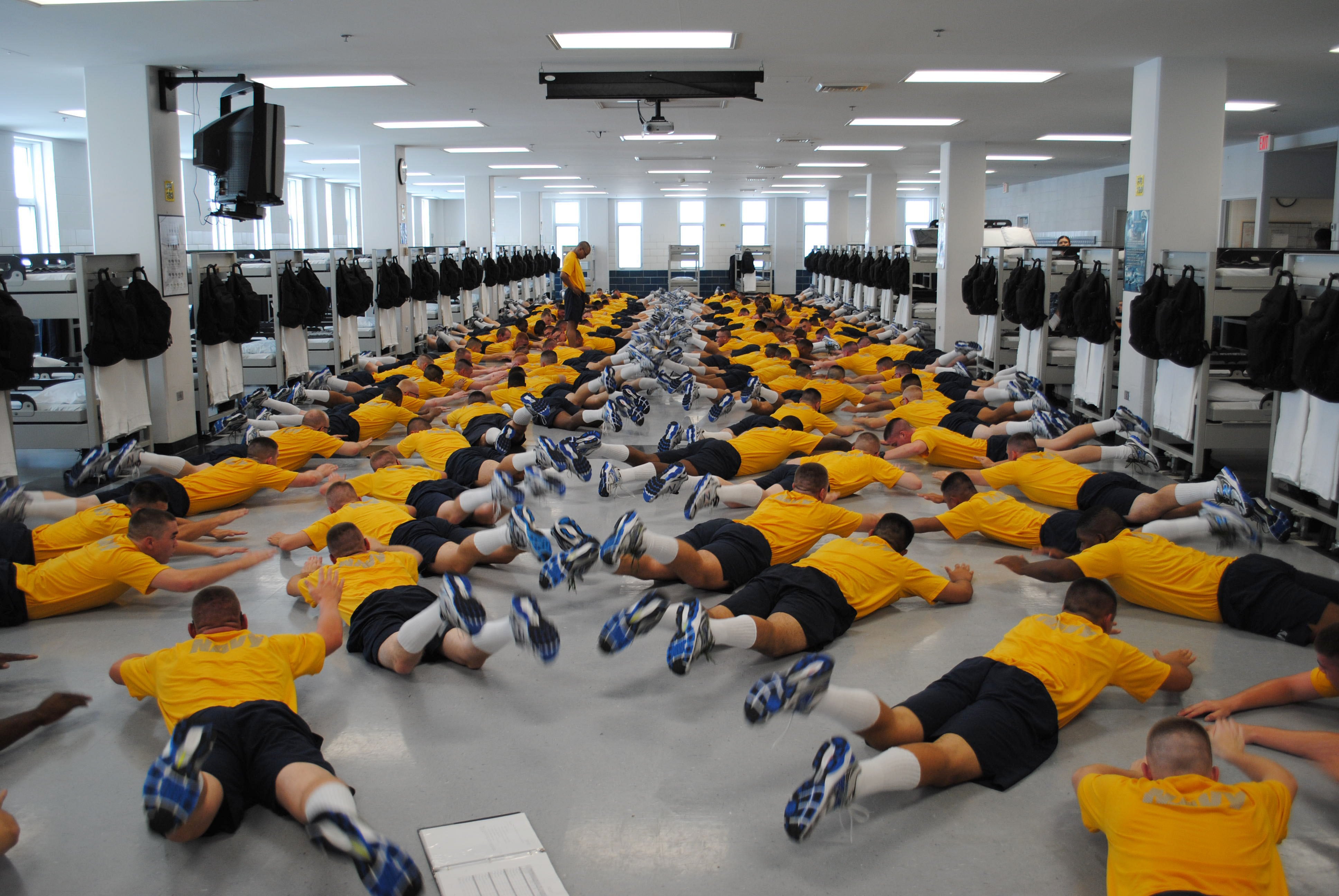
Retired Army Col. Keith Nightingale, who served during and after the Vietnam War, said he fought alongside draftees who never graduated high school, and a Dartmouth University draftee who could calculate deflection and elevation faster than a computer.
The transition would be painful and sacrifice professionalism in the ranks in the short term. But it would benefit the national character in the long term, Nightingale said.
Retired Army Gen. Barry McCaffrey also served during and after Vietnam. He and other officers who entered the Army War College in the early 80s all thought that a return to the draft would help the service, which was struggling with the post-draft transition.
But after writing their research papers on the topic, nearly every officer in his class saw a return to conscription as a bad idea that would hurt the Army’s increasing professionalism, he said.
The son of a career military man and father of a recently retired infantry officer, McCaffrey said he has spent a lifetime closely watching the military.
“This is the most competent, courageous military we’ve had in the history of the country,” he said.
But is that more professional military also more likely to go to war?
MILITARISM
Nightingale said the draft argument shouldn’t be considered until the nation and its leaders answer one question: What kind of military do we want?
“Do we want a small, highly professional force that fits our desired performance model or do we have a much larger body that requires internal cultural adjustments but can also be reasonably effective on the battlefield?” he said.
Laich noted that the nation seems to send its all-volunteer military into conflicts more often. In the 27 years preceding the all-volunteer military, the U.S. engaged in 19 overseas military operations. Between 1973 and 2012, the military executed 144 operations.
Less than 20 percent of the members of Congress have served in the military. A small fraction of them have children who have served or are serving, he said.
Laich and others point to these figures to show an increased willingness on behalf of politicians to use a military option.
“I guarantee if there were conscripts in the force today, there would be more questions by Congress and of Congress,” Laich said.
Peter Feaver, a political science professor at Duke University and author of numerous works on national security, said the argument for the draft is a backdoor approach to ending the current types of interventionist wars we are fighting.
“That is an argument about American grand strategy masquerading as being about the all-volunteer force,” he said.
Laich said he agreed that the conduct of current wars should be part of a national security strategy.
“Unfortunately, I don’t see this strategic level dialogue taking place in the legislative or executive branches of our government,” Laich said.
He said Feaver’s argument seemed to support his group’s position that the sacrifices should be more fairly spread across the population.
McCaffrey argued, as did some panelists at the AVF forums, that the tough time getting new enlistees at the height of the Iraq war and strict “force caps” of troops deployed to various operations, showed the limits of militarism even with an all-volunteer force — if citizens don’t believe in the war, they won’t fight it.
COMMUNICATE AND RECRUIT
Two Army colonels said in the April forum at the College of William and Mary that the volunteer force needs upgrades, but conscription is not the answer.
Col. Stephanie Gradford and Formy-Duval told the crowd that to increase interest in the military and close the cultural gap, the military needs to communicate and recruit better.
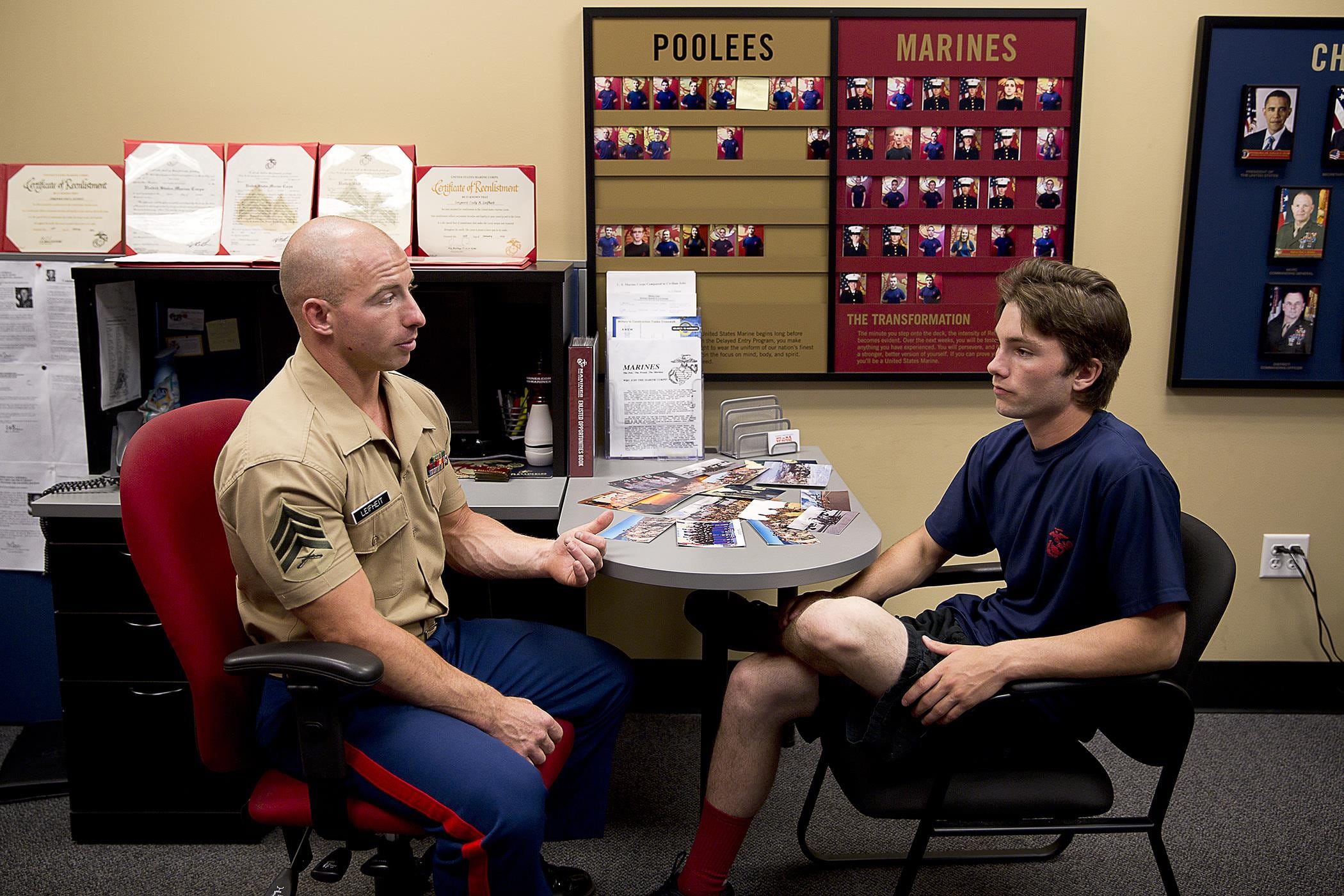
Gradford argued that the military does not explain its mission, or its intangible opportunities to serve and be challenged, well enough to the public.
“People want to be here,” she said. “You don’t stay in the military and make these sacrifices for you and your family based on a paycheck.”
Formy-Duval, a former recruiter, said that the military’s recruiting efforts need to adapt, meeting young people where they are, such as on social media and appealing to what they are looking for, especially a sense of purpose.
A Missouri native who recruited in Arkansas, he also criticized the decades-long recruiting tactics of relying on those southern states that predictably bring in recruits instead of going into more historically challenging areas.
Formy-Duval compared the practice to fishing, where an avid fisherman labels his favorite spot a ”honey hole.“
“Why do I go back to my ‘honey hole?’” he said. “Because it produces.”
Shifting resources, priorities and tactics could broaden the geographic diversity of the ranks, helping to connect the public with the military in places where it hasn’t been in recent decades, he said.
Laich argues that the current numbers — 9,000 soldiers on recruiting duty and hundreds more needed to reach new end strength requirements — show that so much manpower is being devoted to recruiting that it could fill the ranks of almost three Army brigades.
Elimination or reduction of that manpower, enlistment bonuses, money spent on advertising and other recruiting needs could yield significant cost savings, he argues.
But if the volunteer force is preserved and better communication and recruiting adopted, will that attract millennial and future generations to the ranks when some view them as self-interested, distrustful of civic institutions and disinterested in government?
MILLENNIALS, WILL THEY SERVE?
A fellow AVF Forum founder, retired Lt. Col. Mike Young, cited numerous polls of millennials and post-millennials that show they have a high degree of respect for the military, but also do not wish to serve themselves and strongly oppose recent wars.
Young argues the military cannot rely on financial incentives to recruit enough millennials or post-millennials because polls show they are not as concerned with finances as previous generations.
The military must have more of a Silicon Valley feel to appeal to the new generation’s workplace and career goals, which include being able to be engaged in decision-making and share dissenting views, he said.
Data from AmeriCorps show that a desire to serve or volunteer among millennials is higher than that of their age group in the 1970s.
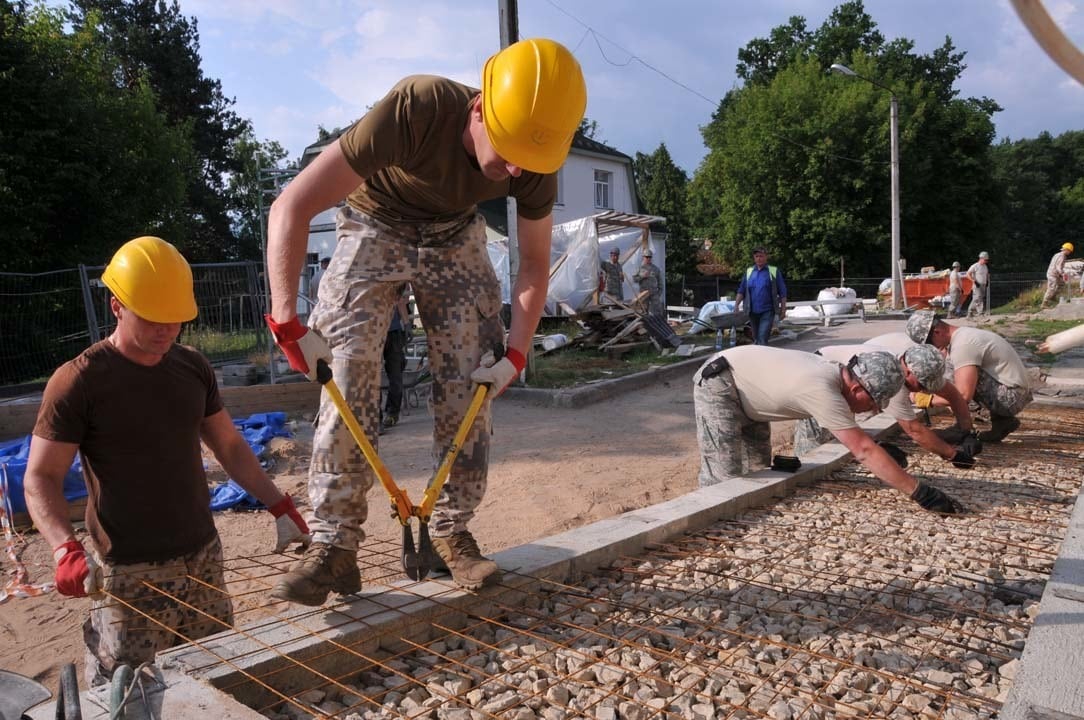
Data from the Bureau of Labor Statistics 2015 report showed that teenagers had nearly the same level of volunteering as 35- to 54-year-olds but that the older cohort’s volunteering levels were declining.
Some on the all-volunteer panels argued that better exposure and appealing to wider service might encourage future generations to consider the military.
NATIONAL SERVICE OPTION
Nearly all of those engaged in this debate do seem to agree on one thing — national service, with the military as an option, would be good for the nation.
High profile current and former military leaders — such as retired Army Gen. Stanley McChrystal and former Chairman of the Joint Chiefs of Staff Adm. Mike Mullen — have publicly called for national service.
“I do worry that it’s just ’please go off and fight our wars, we don’t want to be bothered,’” Mullen said in a 2012 interview at the Aspen Institute. “At some point we cross the line where it’s just like mercenary forces of other countries.”
Laich said he supports national service, if that’s what Americans want, but that is not the same thing as conscription.
He prioritizes the needs of the military, saying that the cost and pure volume of finding places for nearly 4 million Americans who turn 18 each year in national service would be overwhelming.
On this point, his opponent Feaver agrees, saying national service would become a “create work” program, as was common during the Great Depression, and would compete with modern nonprofit and for profit businesses that hire interns and lower-wage workers.
AN ALTERNATIVE
In his book, Laich proposes alternatives to the all-volunteer force, including national service, universal military training, conscription and continuing with the current setup. He concludes that conscription is the most fair, efficient choice among the three options.
He also offers a “fifth alternative,” which would reduce the Army’s ranks by 200,000 soldiers and draw down the Marines by 28,000.
He would add 100,000 service members to the Guard and Reserve components of both while keeping the Air Force and Navy at current levels.
Laich claims that that shift alone would save taxpayers $75.3 billion annually.
WHAT SCENARIO?
Those who’ve spoken on the topic are split on whether even a national crisis would necessitate a draft.
Feaver is skeptical that the American military might find itself in such a predicament as to need large numbers of troops from a draft.
“The problem with the national security scenario is the U.S. military has the wherewithal to do most of the missions needed,” Feaver said.
He brushed aside some of the peer-to-peer type fighting as resulting in quick sea battles or ones that would involve coalitions of nations against a larger foe.
“It’s hard to see the national security problem for which the draft is the national security solution,” Feaver said.
Supporters such as retired Army Col. Larry Wilkerson, former chief of staff to Secretary of State Colin Powell, told the audience at William and Mary that he could quickly envision a large-scale conflict happening tomorrow.
“I can paint you a scenario for a big war,” Wilkerson said.
He then described war game simulations in which a U.S. Navy aircraft carrier sails through the Taiwan Strait, triggering a fusillade of Chinese missiles, sinking the vessel.
Wilkerson then asked, what options does an American president have when there are 5,000 sailors at the bottom of the South China Sea?
Either back off and negotiate, he said. Or go to war.
Todd South has written about crime, courts, government and the military for multiple publications since 2004 and was named a 2014 Pulitzer finalist for a co-written project on witness intimidation. Todd is a Marine veteran of the Iraq War.





